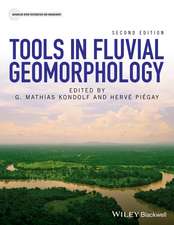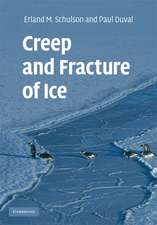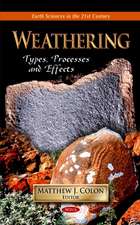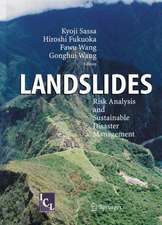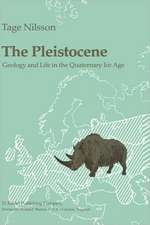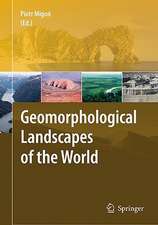The Analysis of Diffuse Triple Junction Zones in Plate Tectonics and the Pirate Model of Western Caribbean Tectonics: SpringerBriefs in Earth Sciences
Autor D. Fraser Keppieen Limba Engleză Paperback – 18 feb 2014
Din seria SpringerBriefs in Earth Sciences
-
 Preț: 380.25 lei
Preț: 380.25 lei -
 Preț: 378.12 lei
Preț: 378.12 lei -
 Preț: 290.09 lei
Preț: 290.09 lei -
 Preț: 477.72 lei
Preț: 477.72 lei -
 Preț: 381.98 lei
Preț: 381.98 lei -
 Preț: 355.07 lei
Preț: 355.07 lei -
 Preț: 355.37 lei
Preț: 355.37 lei -
 Preț: 351.90 lei
Preț: 351.90 lei -
 Preț: 381.21 lei
Preț: 381.21 lei -
 Preț: 377.35 lei
Preț: 377.35 lei -
 Preț: 342.44 lei
Preț: 342.44 lei -
 Preț: 343.98 lei
Preț: 343.98 lei - 20%
 Preț: 389.07 lei
Preț: 389.07 lei -
 Preț: 378.92 lei
Preț: 378.92 lei -
 Preț: 375.62 lei
Preț: 375.62 lei -
 Preț: 379.68 lei
Preț: 379.68 lei -
 Preț: 378.12 lei
Preț: 378.12 lei -
 Preț: 377.18 lei
Preț: 377.18 lei -
 Preț: 443.75 lei
Preț: 443.75 lei -
 Preț: 378.54 lei
Preț: 378.54 lei -
 Preț: 380.07 lei
Preț: 380.07 lei -
 Preț: 376.96 lei
Preț: 376.96 lei -
 Preț: 379.09 lei
Preț: 379.09 lei - 15%
 Preț: 464.18 lei
Preț: 464.18 lei -
 Preț: 376.96 lei
Preț: 376.96 lei -
 Preț: 348.01 lei
Preț: 348.01 lei -
 Preț: 379.48 lei
Preț: 379.48 lei -
 Preț: 375.07 lei
Preț: 375.07 lei -
 Preț: 477.94 lei
Preț: 477.94 lei -
 Preț: 349.41 lei
Preț: 349.41 lei -
 Preț: 381.00 lei
Preț: 381.00 lei - 15%
 Preț: 463.35 lei
Preț: 463.35 lei -
 Preț: 376.22 lei
Preț: 376.22 lei -
 Preț: 376.96 lei
Preț: 376.96 lei -
 Preț: 446.47 lei
Preț: 446.47 lei -
 Preț: 346.62 lei
Preț: 346.62 lei -
 Preț: 379.68 lei
Preț: 379.68 lei -
 Preț: 373.32 lei
Preț: 373.32 lei -
 Preț: 377.95 lei
Preț: 377.95 lei -
 Preț: 377.57 lei
Preț: 377.57 lei -
 Preț: 390.82 lei
Preț: 390.82 lei -
 Preț: 375.45 lei
Preț: 375.45 lei -
 Preț: 377.73 lei
Preț: 377.73 lei -
 Preț: 376.04 lei
Preț: 376.04 lei -
 Preț: 377.18 lei
Preț: 377.18 lei -
 Preț: 379.09 lei
Preț: 379.09 lei
Preț: 376.22 lei
Nou
Puncte Express: 564
Preț estimativ în valută:
71.99€ • 75.35$ • 59.92£
71.99€ • 75.35$ • 59.92£
Carte tipărită la comandă
Livrare economică 31 martie-14 aprilie
Preluare comenzi: 021 569.72.76
Specificații
ISBN-13: 9781461496151
ISBN-10: 1461496152
Pagini: 88
Ilustrații: IX, 75 p. 35 illus., 12 illus. in color.
Dimensiuni: 155 x 235 x 5 mm
Greutate: 0.14 kg
Ediția:2014
Editura: Springer
Colecția Springer
Seria SpringerBriefs in Earth Sciences
Locul publicării:New York, NY, United States
ISBN-10: 1461496152
Pagini: 88
Ilustrații: IX, 75 p. 35 illus., 12 illus. in color.
Dimensiuni: 155 x 235 x 5 mm
Greutate: 0.14 kg
Ediția:2014
Editura: Springer
Colecția Springer
Seria SpringerBriefs in Earth Sciences
Locul publicării:New York, NY, United States
Public țintă
ResearchCuprins
Introduction.- Western Caribbean Tectonics.- Abstract.-Tectonic constraints.- Theoretical analysis of Western Caribbean tectonics.- Western Caribbean Plate corners.- Relative Plate motions.- Western Caribbean arc deformation style.- Review of Western Caribbean and Gulf of Mexico tectonics.- Shortening at the Eastern Caribbean Plate boundary.- Extension conjugate to Eastern Caribbean shortening.- Displacements at the Western Caribbean Plate corners.- Western Caribbean microplates.- Discussion.- Consistency with known data.- Predictive Power.- A new, multi-mode model for Western Caribbean tectonics.- The Chortis Block controversy.- Neo-Caribbean tectonics.- Meeting of the Americas.- Age of Gulf of Mexico opening.- A geodynamic model for the Western Caribbean region.- Conclusions.- References.- Normalization analysis for possibly unstable triple junction zones.- Abstract.- Introduction.- Step 1: Define a doubly-tangent, moving Euclidean tectonic reference frame.- Step 2: Determine compatibility of major plate motions and plate boundary orientations.- Step 3: Determine the stability of the normalized, hypothetical triple junction.- Step 4: Identify end-member nonrigid solutions for an unstable triple junction.- References.
Notă biografică
Dr. Fraser Keppie is employed as a geologist with the Geological Services Division, Department of Natural Resources, Nova Scotia. His initial research and mapping in Nova Scotia is focused on compiling and extending tectonic models for the assembly and breakup of Pangea, with an emphasis on understanding the mechanisms of formation and evolution of the Devono-Carboniferous Maritimes Basin and its hydrocarbon potential. Prior to 2010, Fraser completed undergraduate degrees in geology and computer science at St. Francis Xavier and Acadia Universities, respectively, a doctoral degree in tectonics at McGill University, and a post-doctoral appointment at Caltech in geodynamics.
Textul de pe ultima copertă
Modern researchers in plate tectonics may be concerned with the analysis of distributed deformation across diffuse plate boundaries and triple junction zones. This book extends classic methods of kinematic analysis first developed in the 1960s to the more general scenarios of diffuse deformation zones between plates. The analytic methods presented specifically target the non-rigid deformation implied by unstable triple junction configurations. These methods are then applied to the tectonic evolution of western Caribbean region which provides new ways to test and challenge the established Pacific model of Caribbean tectonics. Possible advantages of the new Pirate model of Caribbean tectonics are discussed in terms of paleo-geography and paleo-ocean connections, as well as mineral and hydrocarbon potential and seismic risks across the region.
Caracteristici
A treatment of unstable triple junction configurations in terms of their subsequent, non-rigid evolution and as regions of diffuse, inhomogeneous deformation A treatment of western Caribbean tectonics in terms of quantitative kinematic principles The first quantitative treatment of the new Pirate model of Caribbean tectonics as a whole, i.e., for both the northwest and southwest Caribbean Plate corner regions


